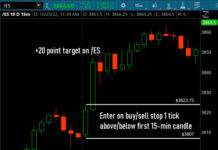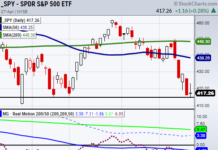For an athlete, improving performance starts with breaking down the different parts of the game. What are the pieces that make up match, tournament or race?
Once we get a clear picture of the pieces that make up the event, we can practice each piece individually, before bringing them together as one.
Trading is no different.
In trading, we have two main pieces that we can control execution and emotion. Simulated trading is a great way to strip away the emotional side of trading and just focus on mastering technique.
While I’m not a huge fan of simulated trading due to the inconsistencies that it can have as compared to live trading simulated trading is a great way to get familiar with a platform, get the trade ladder setup how you’d like and ensure that any mistakes made are not because of an error clicking around on your DOM.
It’s been a while since I’ve played around on a simulated trading account, but back in the day, you were filled when price just touched your order whereas in real time price needs to trade through your order to get filled.
Some tricks to help you get the most out of your simulated trading:
- Set your entry order one tick beyond where you would like to be filled to ensure proper “real-time” fill. So if you have a limit order for a long entry on the ES at $2900.50, on SIM drop it down to $2900.25 to ensure that if it were a real environment, price would trade through your order initiating the fill.
- Practice trading multiple contracts so you get to experience where you’d like to be when growing in real time. I’m talking 3 contracts on the ES so you can practice scaling out.
Just like a doctor or lawyer would have to pass an exam. Prove that you can trade before putting your capital at risk. A prop firm can be a great way to leverage your skills while limiting your capital at risk.
When trying to learn a new instrument, it’s tempting to go straight for learning that favorite song, riff, or cool solo, but it’s the foundational elements and mastering the individual pieces that allow you to become truly exceptional.
So when it comes to trading, just like with athletics and music, break down the different pieces and work on them individually, then build them into a sound trading approach.
Twitter: @EminiMind
Any opinions expressed herein are solely those of the author, and do not in any way represent the views or opinions of any other person or entity.








